Conflict Management
1/22
There's no tags or description
Looks like no tags are added yet.
Name | Mastery | Learn | Test | Matching | Spaced |
|---|
No study sessions yet.
23 Terms
What are two organizational sources of conflict?
1. Communication factors
2. Structural factors TYPES (REWARDS: biased eg. promotions, bonuses, etc. ; RESOURCE INTERDEPENDENCE: not enough time/equipment/difficult logistics)
What are personal behavior factors that are a source of conflict? (3)
Values, perception, personality
What are communication factors that cause conflict?
Miscommunication, over-communication, communication is misinterpreted, inaccurate, or incomplete
What are personal behavior factors that cause conflict?
Differences in personal values, perceptions, goals and objectives, or personalities can cause conflict
What are some structural factors that can cause conflict?
The larger the organization the more likely there will be conflicts, especially where resources are scarce or under high demand
Describe competing as a conflict management style
(High assertiveness and low cooperativeness). The competing (forcing) style attempts to overwhelm an opponent with formal authority, threats, or the use of power.
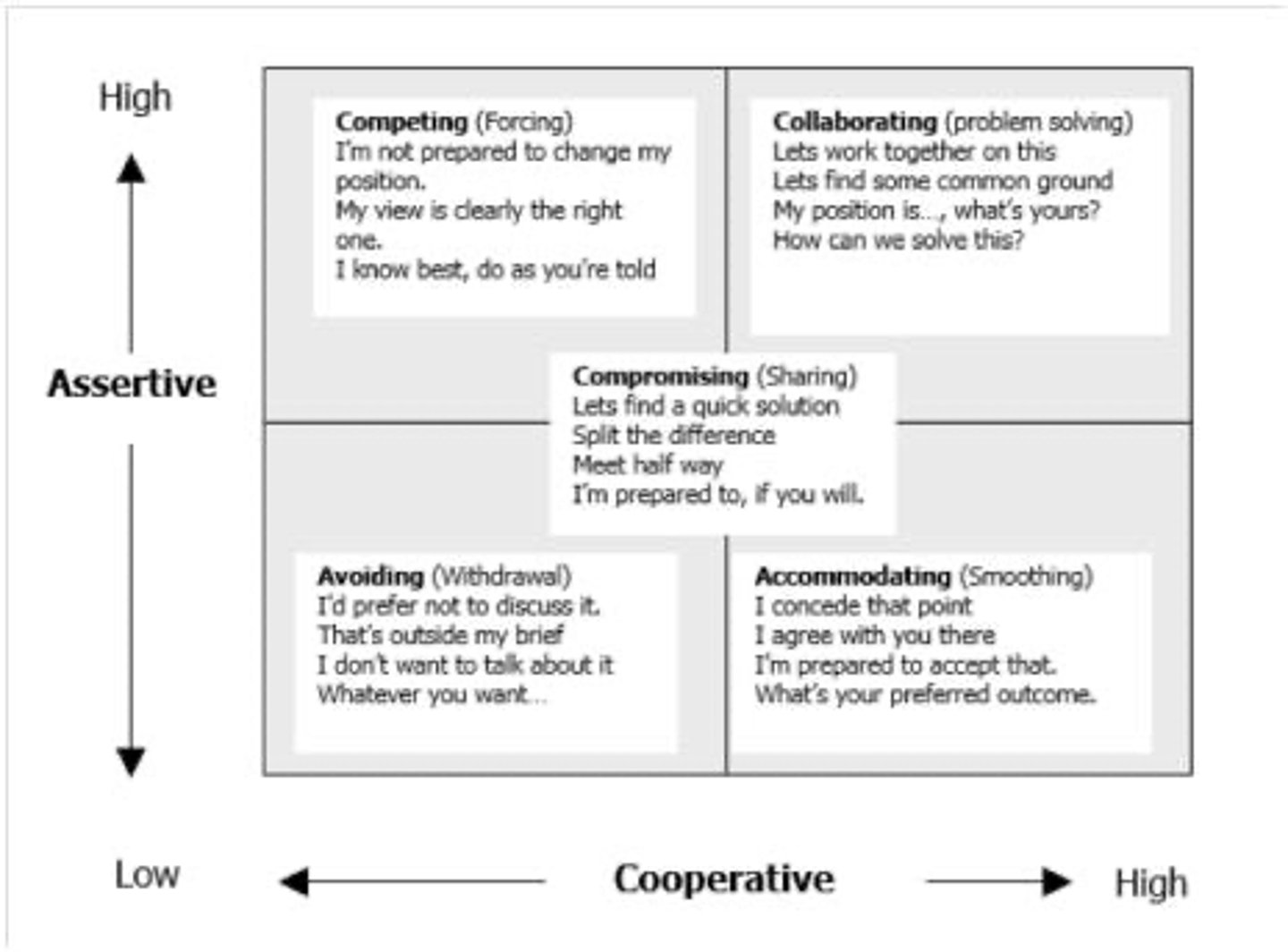
Describe collaborating as a conflict management style
(High assertiveness and high cooperativeness). The collaborating style uses an attempt to satisfy the concerns of both sides through honest discussion. For the collaborating style to be successful, trust and openness are required of all participants. Collaborating involves behavior that seeks a 'win' position for both groups.
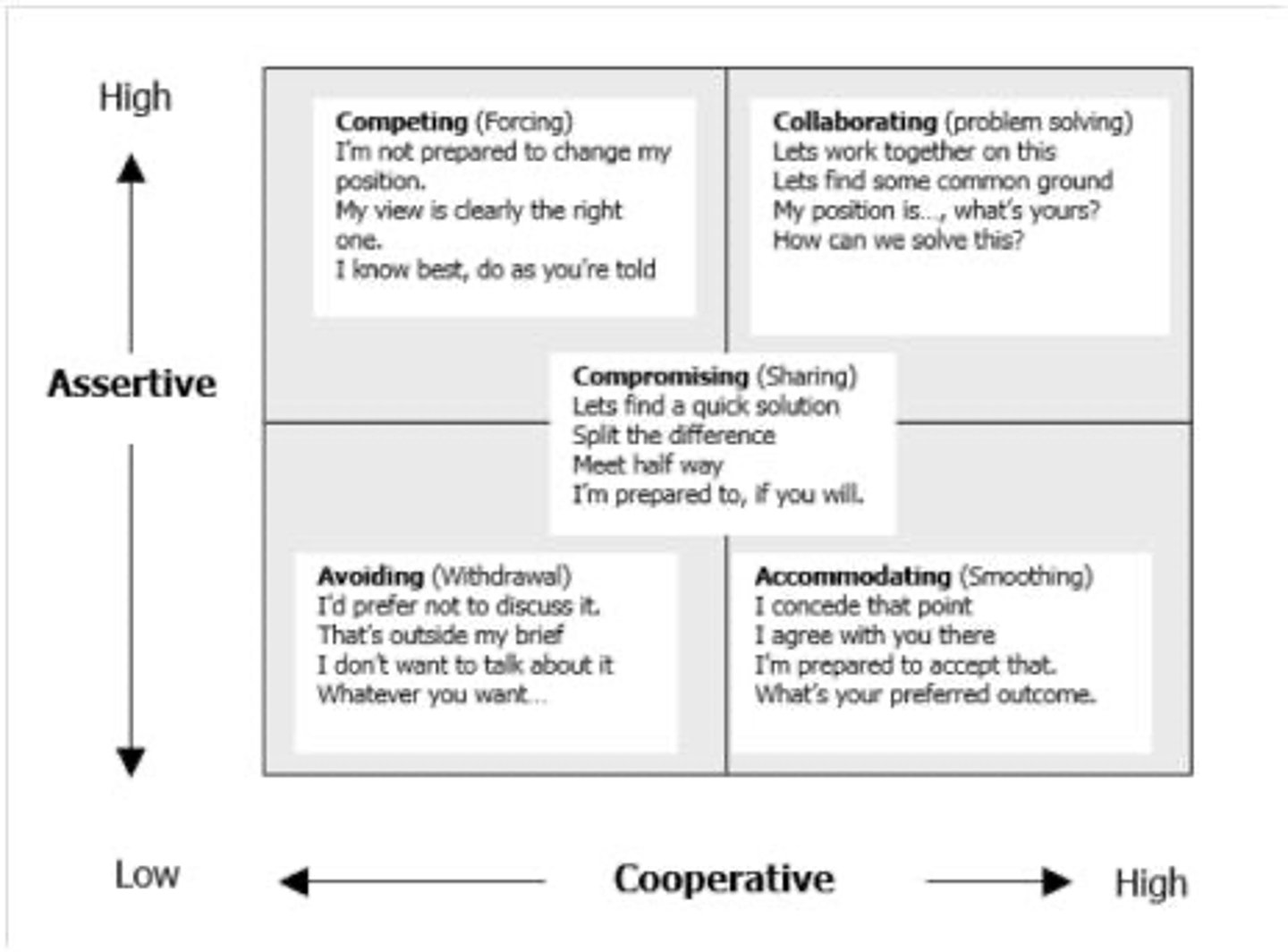
What are the five conflict management styles according to the Thomas Killman Conflict Management Model?
1. Competing (forcing)
2. Collaborating
3. Compromising
4. Avoiding
5. Accomodating
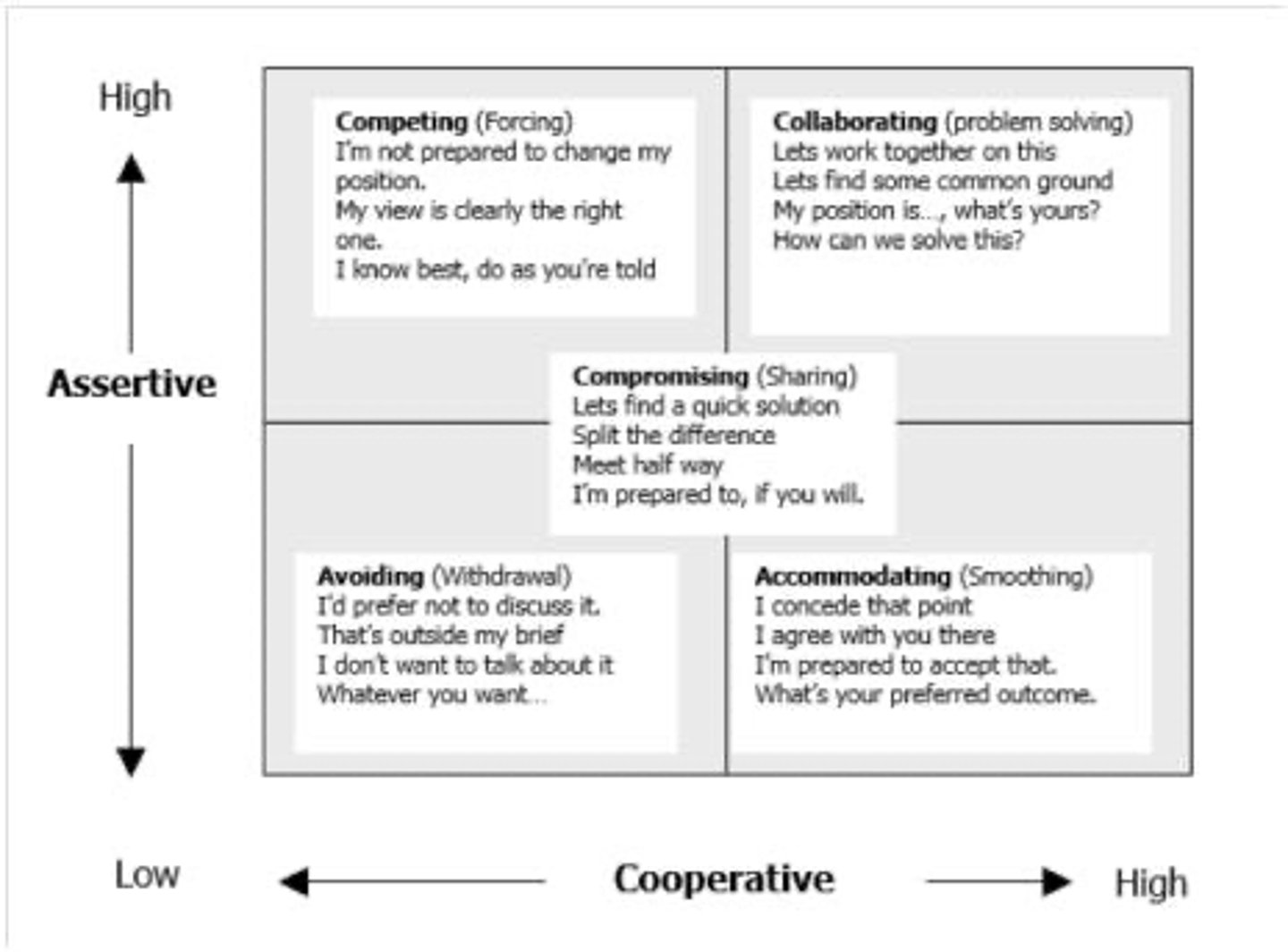
Describe compromising as a conflict management style
(Some assertiveness and some cooperativeness). The compromising style requires a willingness of both parties to change, adjust, or give something up.
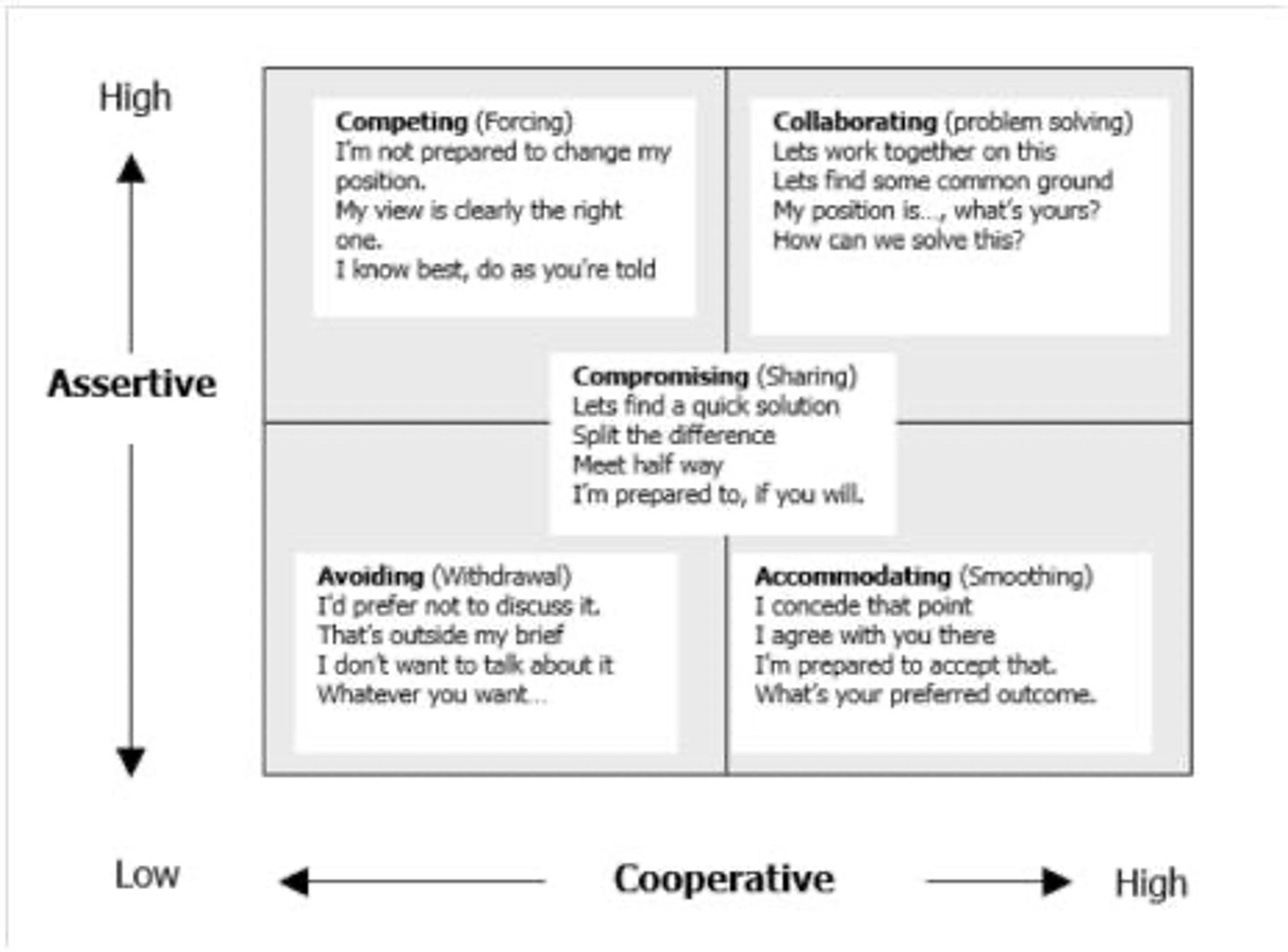
Describe avoidance as a conflict management style
(Low assertiveness and low cooperativeness). The avoiding style appears to indicate a neutral position of participants which can often lead to 'things working themselves out,' but can also result in an escalation of a situation by allowing it to go unresolved.
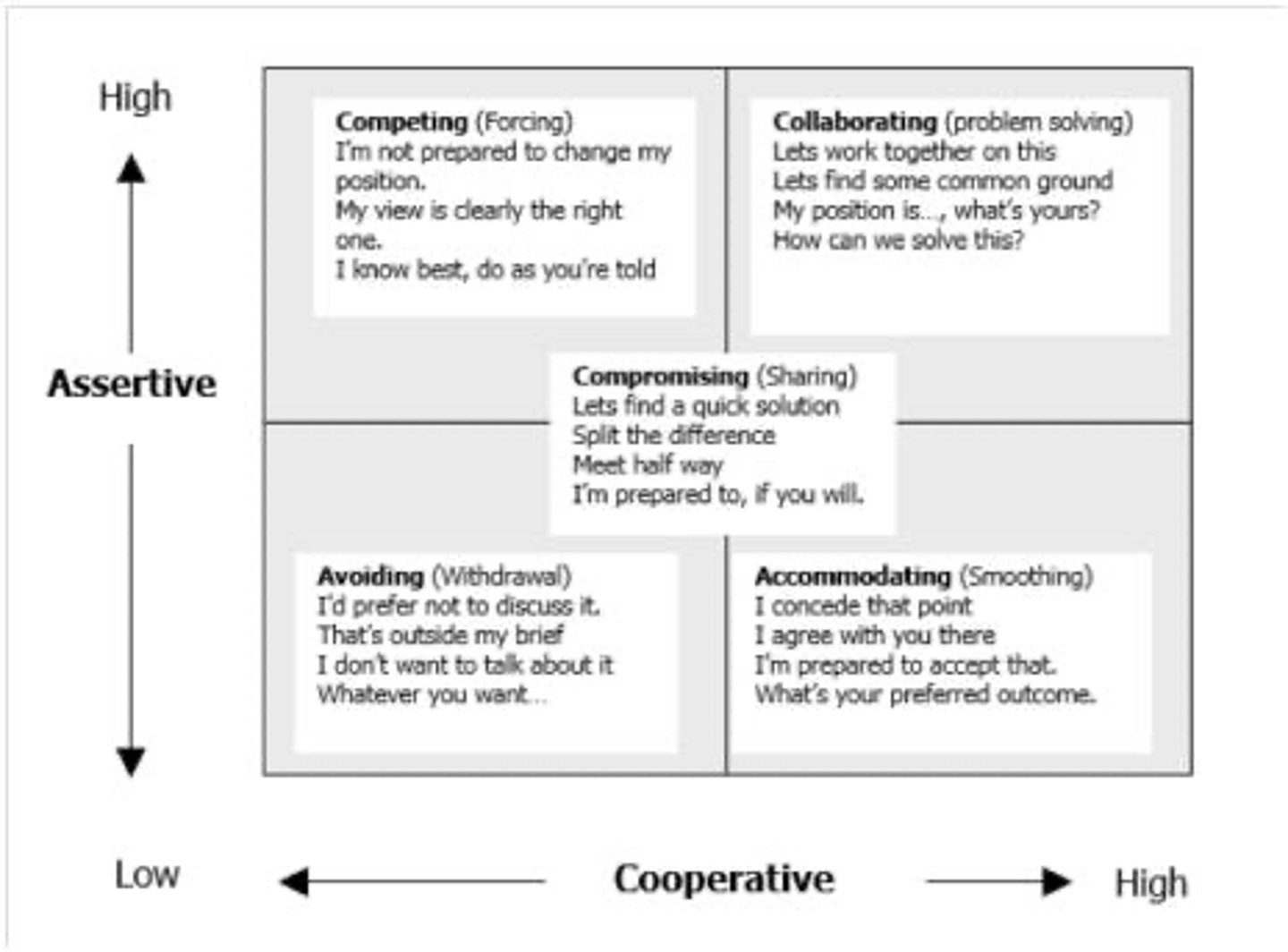
Describe accommodating as a conflict management style
(Low assertiveness and high cooperativeness). The accommodating style often simply consists of giving in to another person's wishes.
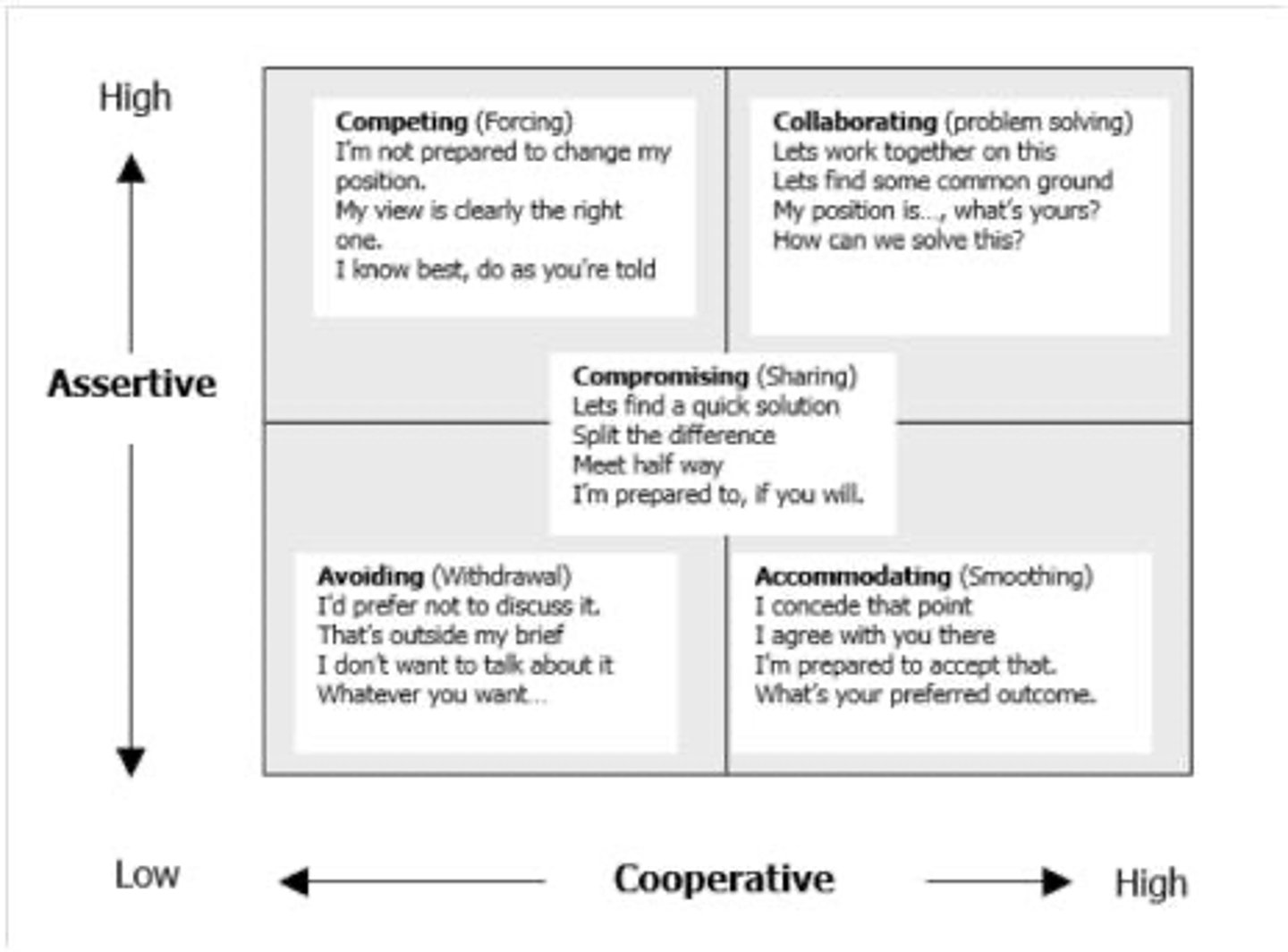
What are the AFNC's Five Problem-Solving Approaches
1. Cooperative
2. Comply
3. Evade
4. Insist
5. Settle

Define Evade as a problem-solving approach
(low task orientation and low people orientation)
Similar to avoiding
"Not now can you come back later"
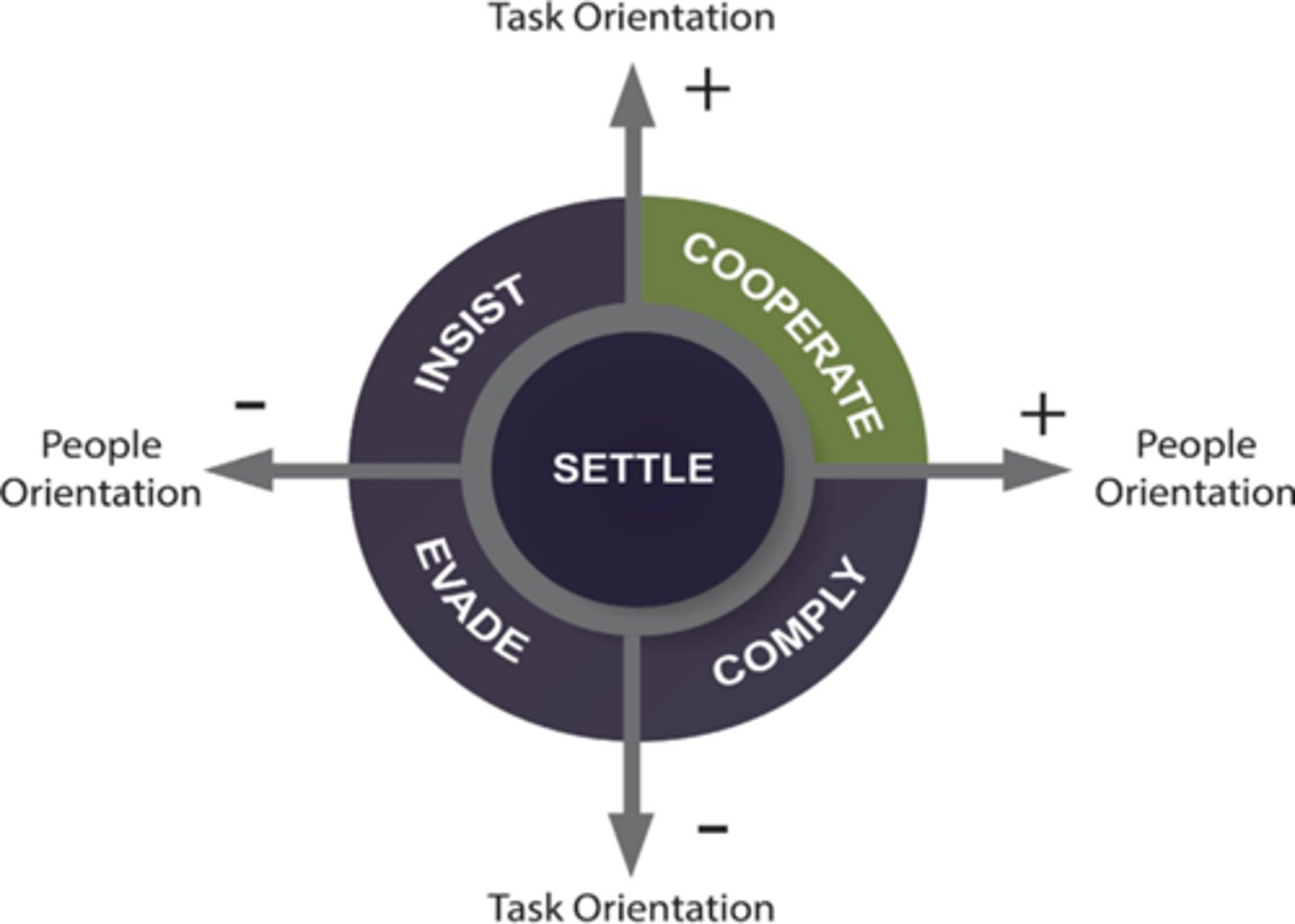
Define Comply as a problem solving approach
Low task orientation and high people orientation
Similar to accommodating
"Yes absolutely, lets do it your way"
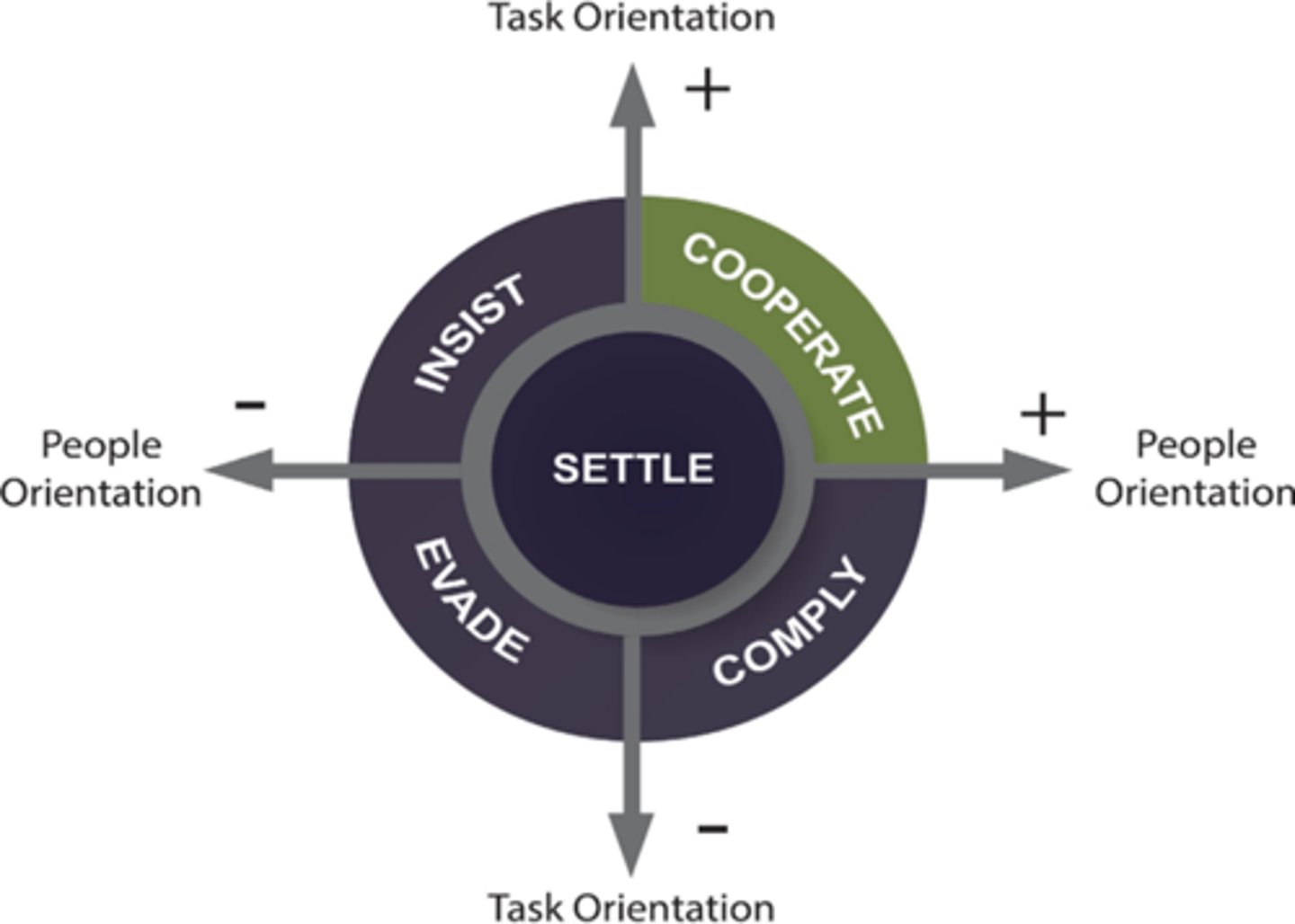
Define Insist as a problem solving approach
High task orientation and low people orientation
Similar to competing (forcing)
"Take it or leave it" or "Today - do it my way"
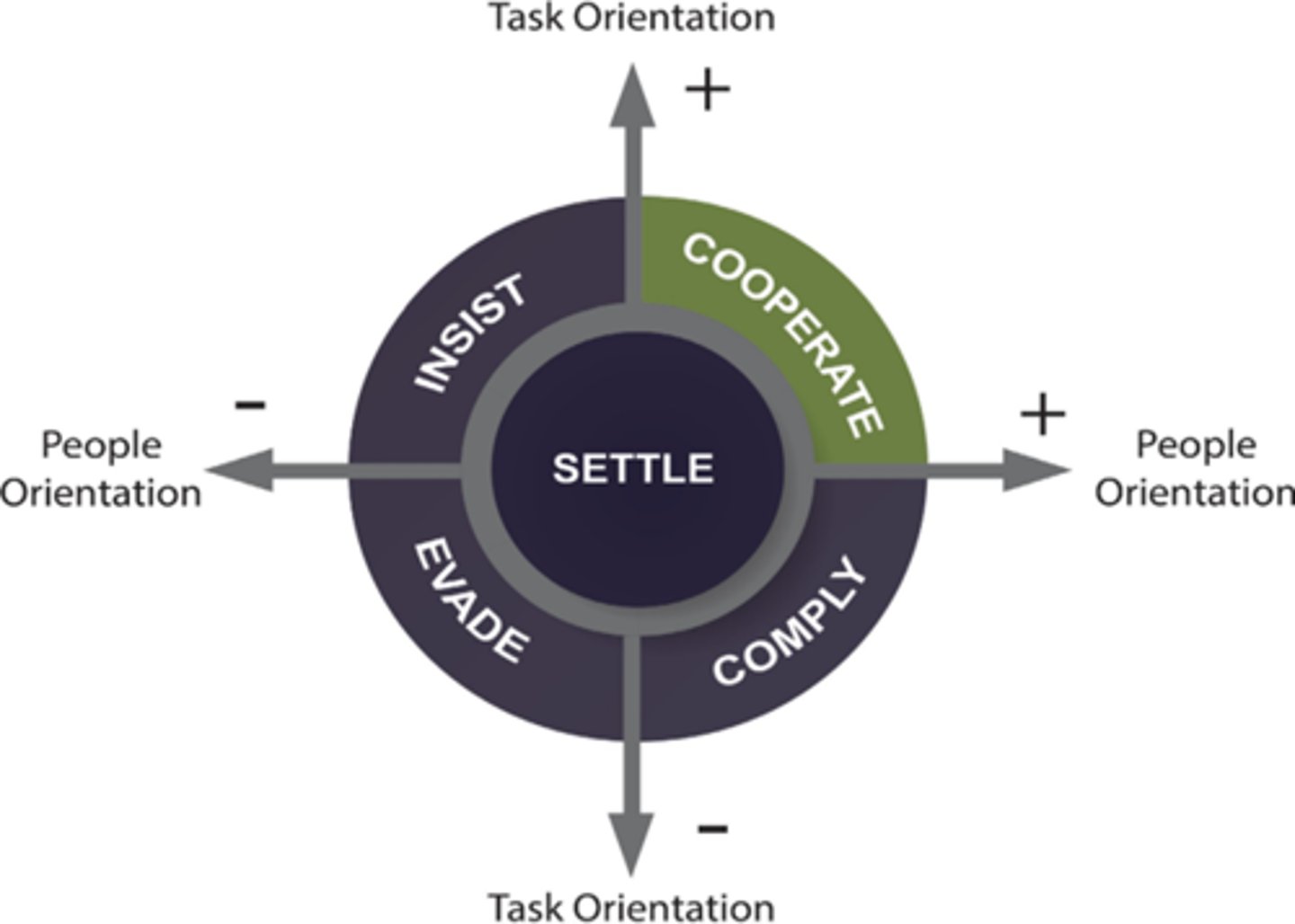
Define settle as a problem solving approach
Task and trust may be somewhat important but not much, power is evenly divided between parties
Similar to compromising
"Let's split the difference and call it a day"
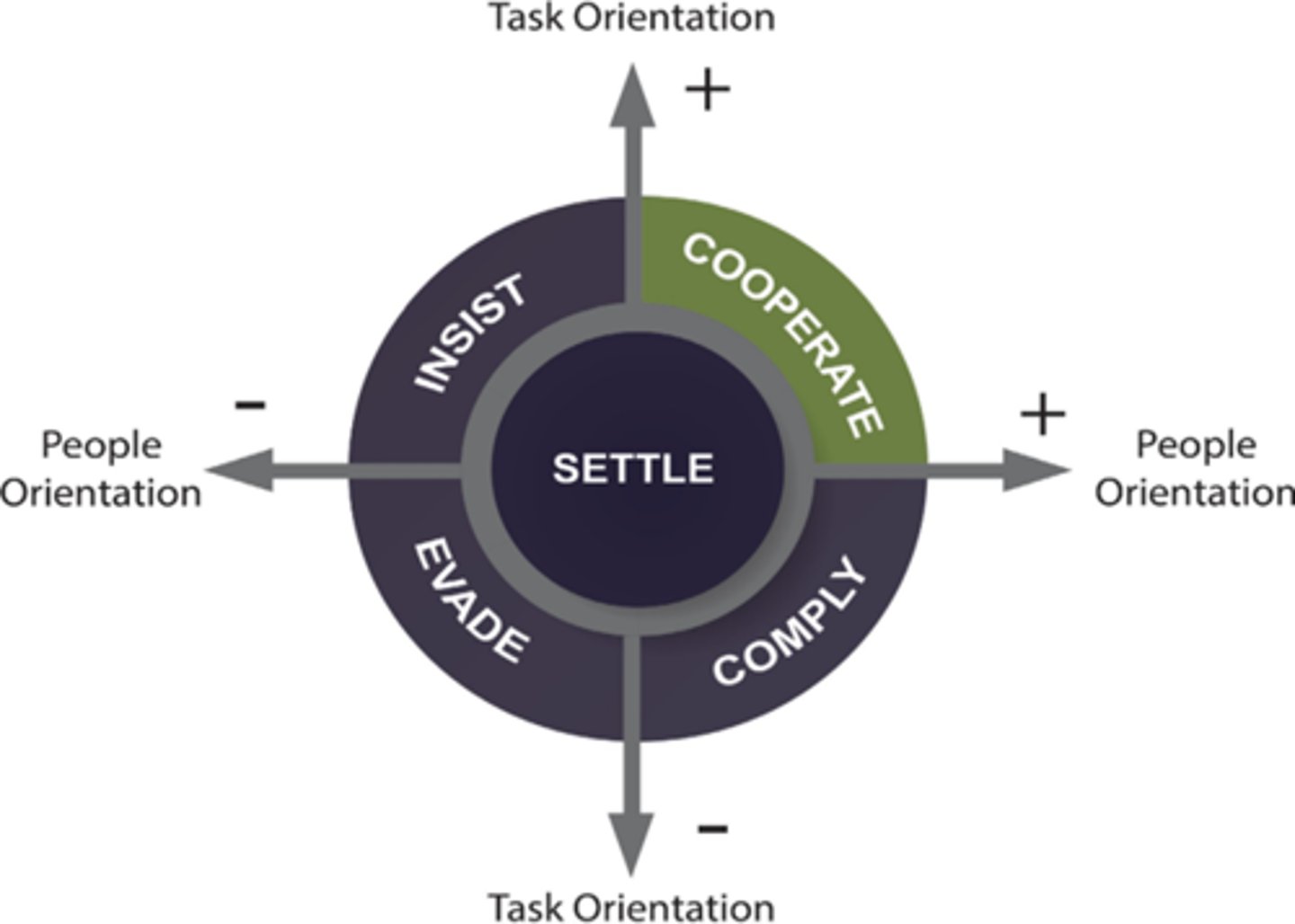
Define cooperate as a problem-solving approach
High task orientation and high people orientation
"Let's work together and come up with an even better solution"
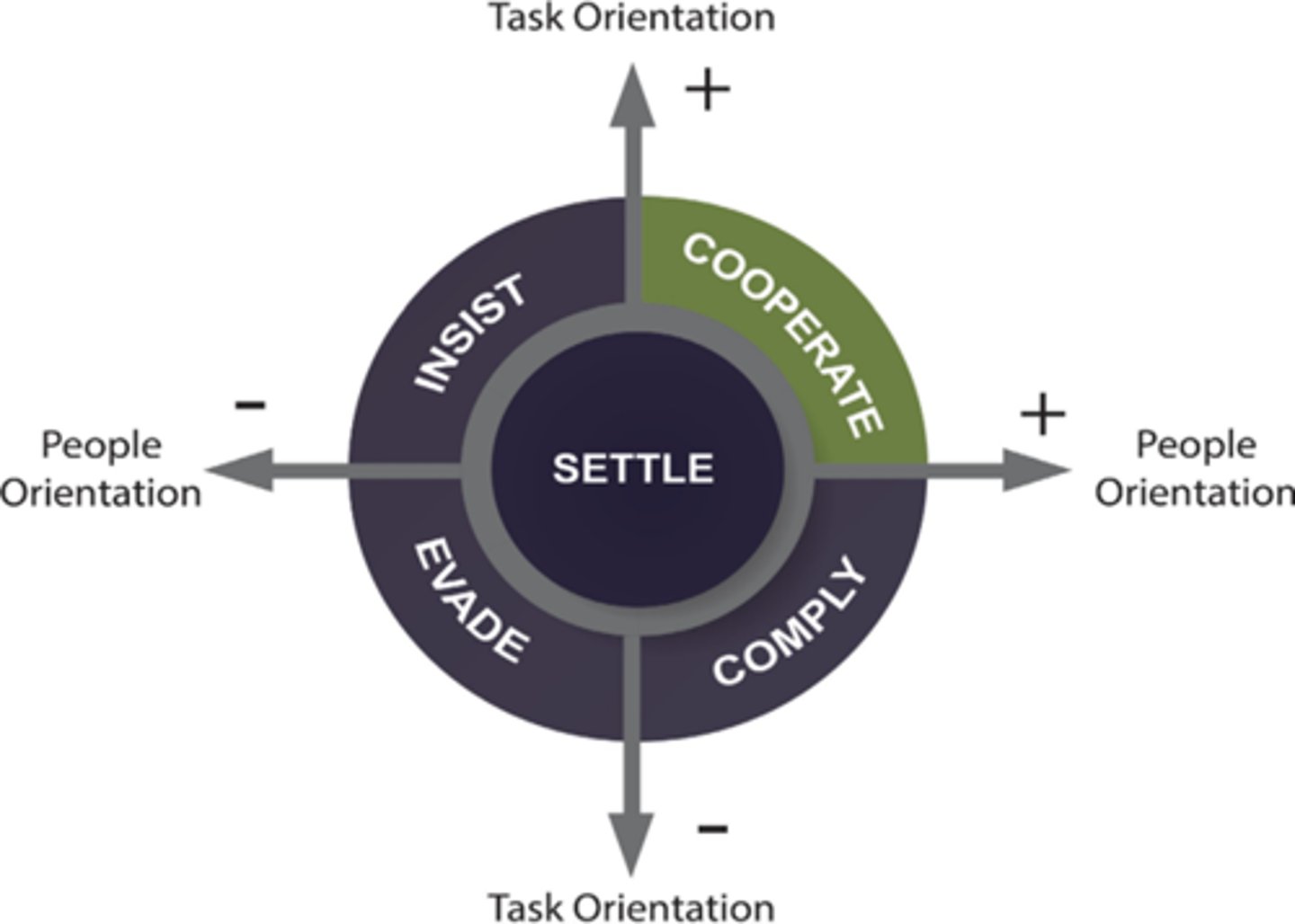
What does the TIPO model stand for?
-Trust (process/personal)
-Information (Yours/theirs)
-Power (With/other)
-Options (One/many)
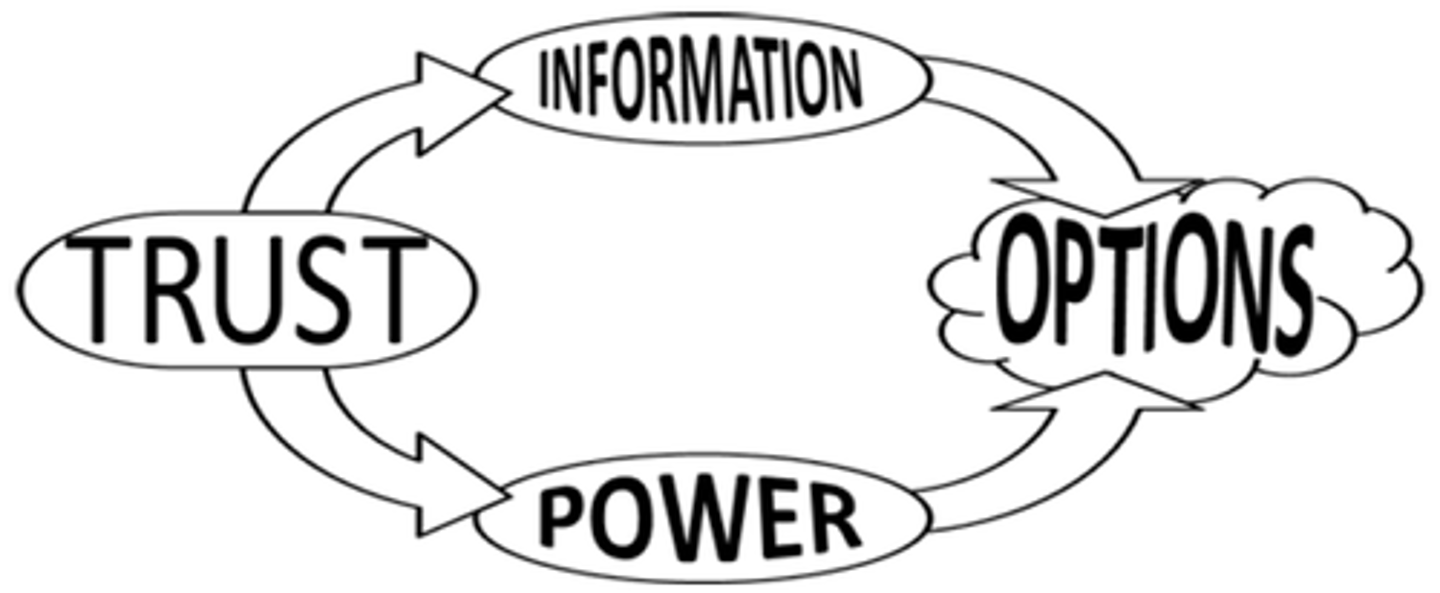
What are the two types of negotiation? Describe them
1. Distributive (zero sum-gain perspective, resources are limited)
2. Integrative (Does not see resources as fixed/zero-sum, seeks to protect relationships and achieve solutions)
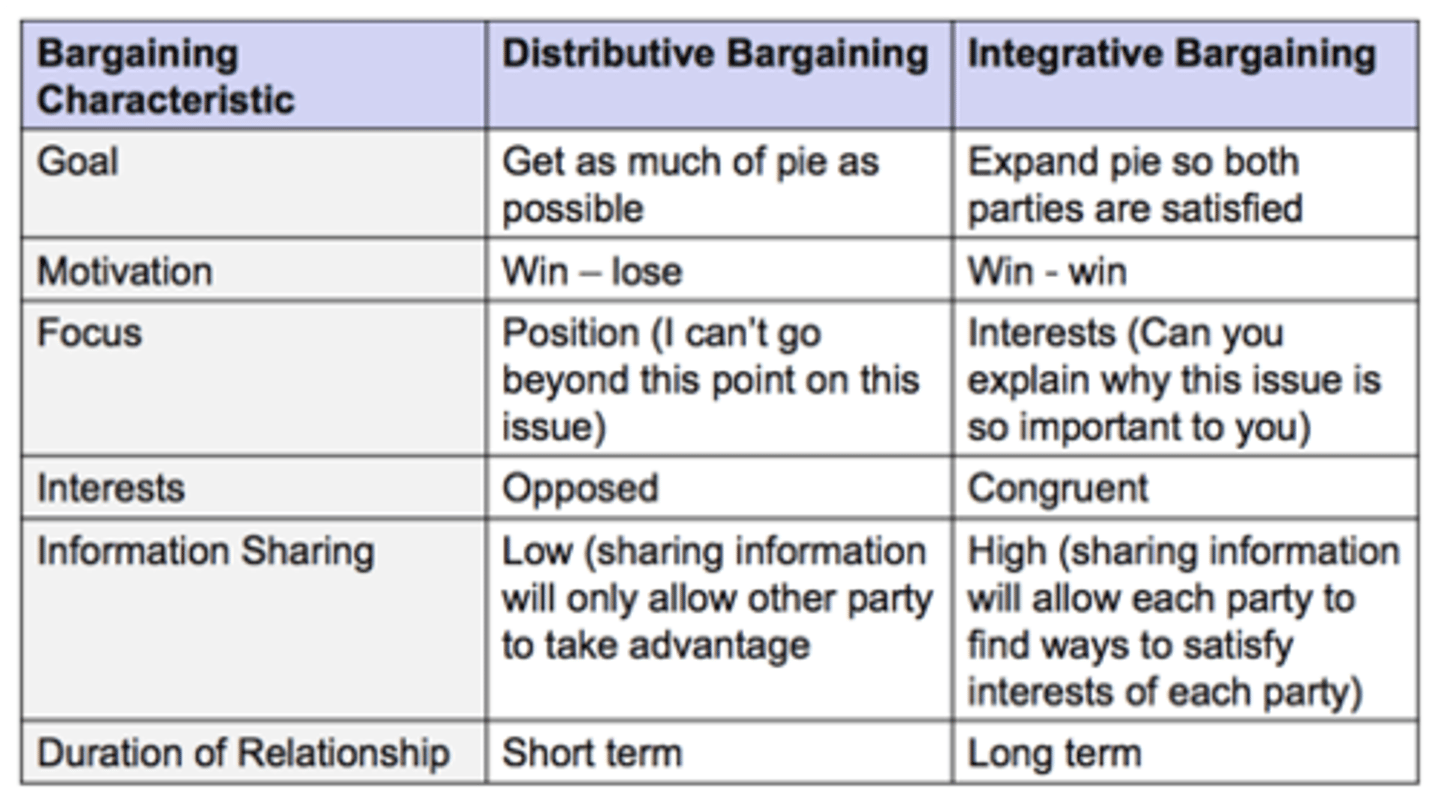
What are the two types of power?
Power over or power together
Types of trust
(TIPO)
Trust in persons or processes
Types of information
(TIPO)
Ours or theirs
Types of options
(TIPO)
One or many